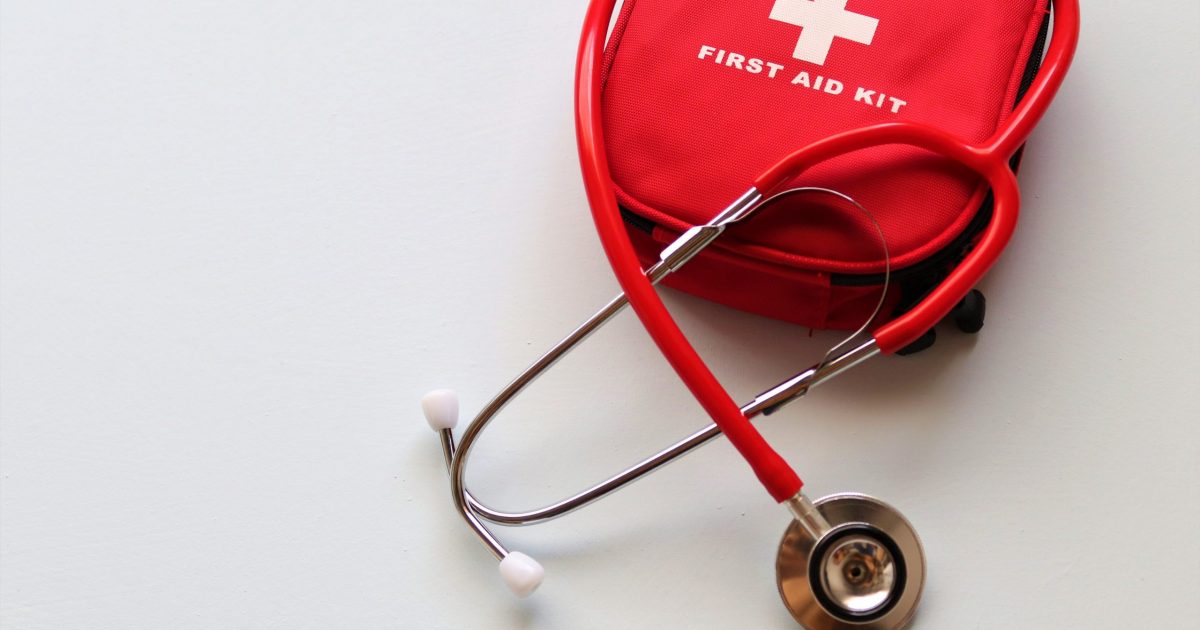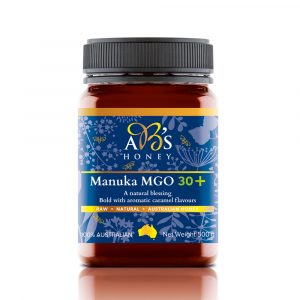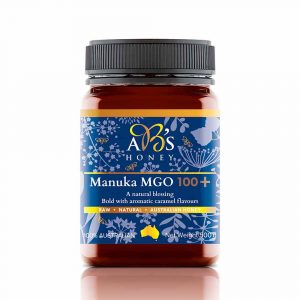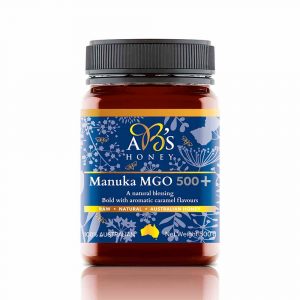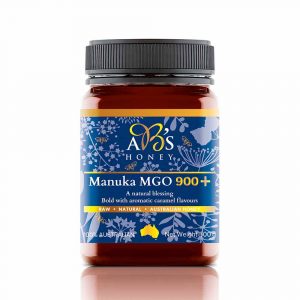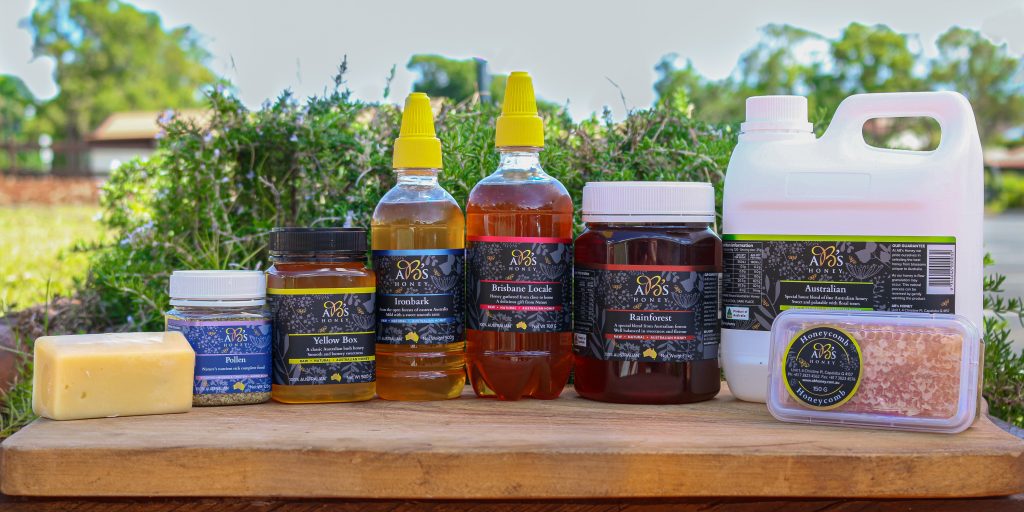Honey has been used as a wound treatment for thousands of years, yet it’s only recently that medical science has caught up. Scientific studies now acknowledged that honey – and especially active medical grade Manuka honey – has amazing healing and health benefits. This article explores the uses of honey on wounds, Manuka or medical honey for wounds, and honey for diabetic wounds.
History of using honey to treat wounds
Honey has been used by people for thousands of years. Archaeological findings indicate that wounds were treated with honey by the ancient Egyptians, Greeks, Romans, and other ancient and recent cultures and civilisations. In fact, archaeologists have found rock paintings of honey harvesting dating back more than 8000 years! For more history on honey use in ancient times, check this article out.
The science behind honey as a wound treatment
A study by Louay Labban, Al Rasheed Private University, found that “honey has antibacterial effects, attributed to its high osmolarity, low pH, hydrogen peroxide (H2O2) content, and content of other uncharacterized compounds.” In other words, honey is regarded “as an antimicrobial agent with the ability to promote wound healing”.
The complex substance is so well-established that healing times for moderate superficial burns and wounds are improved when honey is used as a conventional dressing.
How it works
Honey inhibits the growth of bacteria at the site of the wound. It seals in a moist healing environment that helps minimise scarring and provides a protective barrier between the dressing and the wound.
All pure raw honey can be safely applied to wounds and burns, but perhaps the best honey for the job is Manuka honey.
Manuka honey and wound care
While all honey has some antimicrobial effect, Manuka honey is a far more effective antimicrobial. Manuka honey has been used to successfully treat infected and non-infected wounds, burns, surgical incisions, leg ulcers, pressure sores, traumatic injuries, meningococcal lesions, side effects from radiotherapy, and gingivitis (inflamed gums).
Research has shown the specific antimicrobial benefits of Manuka honey are due to the natural presence of methylglyoxal (MGO). The level of MGO in a batch of honey will determine its level of antimicrobial activity. MGO levels should be at least at MGO 500+ for medical use, and products with MGO 900+ are ideal for wound care and oral care.
Did you know? What you may hear called medical honey is actually Manuka Honey with active levels of MGO.
When you are using Manuka honey for wound care, use the highest potency of antibacterial and antioxidant activity available (i.e. highest MGO content). To find the best manuka honey for wound healing, refer to our Australian Manuka honey strength guide.
Honey for diabetic wounds
A persistent wound that refuses to heal can be traumatic. Slow-healing wounds are a particular risk for people with diabetes, and often associated with serious and life-changing complications. A small cut can turn into a painful ulcer that defies treatment and stubbornly refuses to heal.
If you have been diagnosed with any form of diabetes, you have probably already noticed that wounds are slower to heal for you than for your non-diabetic friends and family. Your health professional may have already explained the reasons why, and it comes down to the damage that high blood sugar can do to your body.
Diabetes is characterised by the body’s inability to produce or use insulin, which turns glucose (sugar) into energy. When sugar is not metabolised, it causes high blood sugar levels, which leads to damaged nerves and blood vessels and reduced wound healing ability.
In diabetics, this damage to nerves and blood vessels often means wounds are not noticed as they occur, resulting in a delay in starting treatment. Damaged nerves reduce the body’s ability to notice the pain of a cut, and poor circulation reduces healing blood flow.
How diabetes affects wound healing
Hyperglycaemia, commonly known as high blood sugar, is a contributing factor in slow-healing and non-healing wounds.
High blood sugar through diabetes disrupts the healing pattern for chronic wounds in several ways, causing:
- Abnormal cellular pathways – disrupted ‘repair’ signals trigger unwanted changes in a cell or switch off a desired healing response. The immune system is not functioning properly to heal wounds.
- Peripheral neuropathy – nerve malfunction reduces skin sensitivity, meaning wounds – particularly in the feet – often go unnoticed.
- Peripheral vascular disease – a blood circulation disorder. Diabetics have thicker blood and narrower veins, meaning they may develop poor circulation. This makes it difficult for the body to deliver the nutrients and oxygen that wounds need to energise cells for repair and regrowth.
Traditional care includes regulating blood sugar levels through diet and medication, removal of pressure within and around the wound, and wound debridement (removal of dead tissue).
We’ve covered diabetic wound healing with honey more thoroughly in this article.
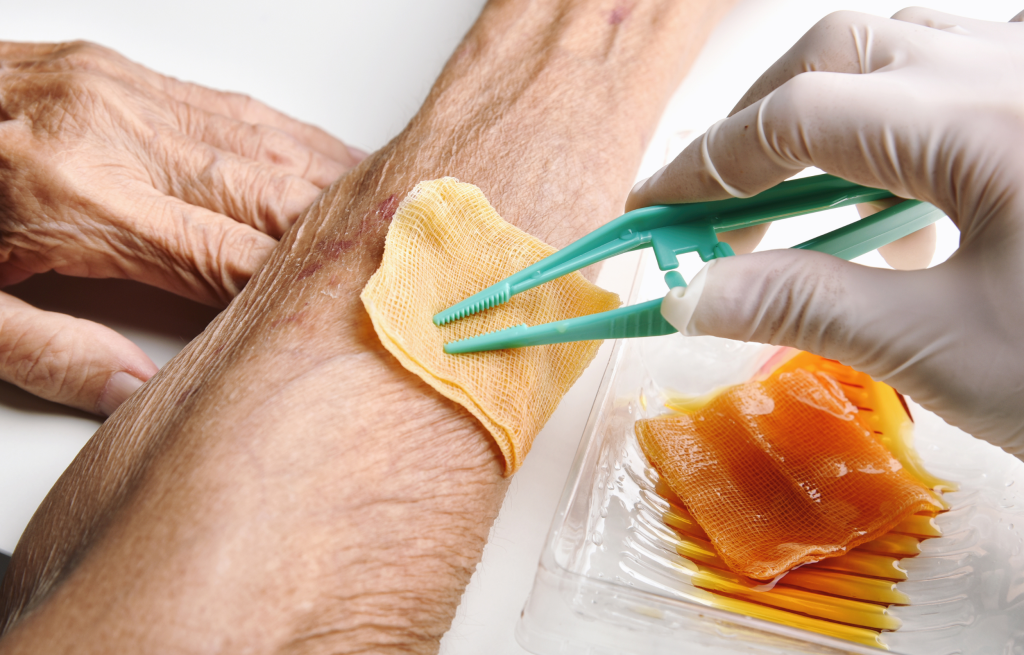
How to use honey to treat wounds
Honey has many health benefits. From healing superficial wounds to soothing sore throats, honey is a very versatile remedy for many ailments.
Here is the very simple process for applying honey to a wound:
1. Clean the wound thoroughly. You can gently dab with raw honey or Manuka honey on sterile cotton wool to do this.
2. Apply the required amount generously to the surface and into the wound. Ensure that the honey is in full contact with the affected area.
3. Wrap the wound with a bandage. Use dressings which will hold enough honey on the wound (e.g., lower absorbency) to generate results and prevent leaking.
4. Change the wound dressing regularly. Honey is a water-soluble material, so it will absorb wound fluid and become diluted over time.
Honey for wounds
Honey is regaining popularity in medical fields as a modern wound treatment, especially as scientific research is now validating and proving the worth of Manuka honey in wound care.
Any pure raw honey can be used on wounds and burns. AB’s Honey is a perfect and very versatile pantry staple, and 100% pure, raw, and Australian.
Click here to see our full range of Australian honey and bee products.
Disclaimer: We are not doctors; you should always seek the advice of a medical expert before commencing any treatment. We simply know the quality of AB’s Honey products and our Manuka Honey is the bee’s knees with a rich and distinctive earthy taste, coupled with its deep rich dark colour.

